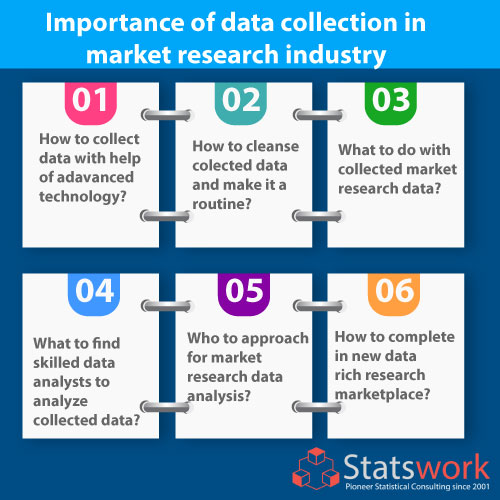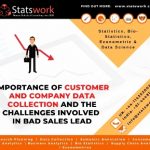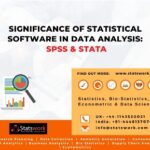Data collection is transforming the market research industry. Explain with few possible examples.
In-Brief
- The resource of the secondary data can be internal or external. The resources may comprise books or periodicals, data services, published reports and computer data banks.
- When the required data is non-existent, incorrect or inadequate, out-dated, the researcher needs to gather primary data. Most marketing research projects do contain some aspects of primary data collection.
- Primary data collection services may be acquired from subject matter experts, individual consumers and organizations, random samplings of a target segment and other sources.
Introduction
Data collection is the essential part of market research which is a detailed process where a researcher makes a planned search for all related data. The success of the research is controlled based on the integrity and relevance of the data. The quality of the collected data is based on the data collection method. The selection and use of approaches for conducting market research need a great deal of expertise and experience to measure suitability correctly.
These methods come under two different types of research categories, which are quantitative research and quantitative research.
Qualitative Research: Market research data collection for qualitative research is generally used to develop an initial or fundamental understanding of the problem. It is non-statistical, and the answers are derived from the data itself. It is used in exploratory and descriptive research designs. Qualitative data can be obtained through various forms like interview transcripts, diaries, documents, and notes made through observing. It helps in quantifying the data and generalizes the results from the sample to the population.
Quantitative Research: Quantitative research is the process of collecting and analyzing numerical data. It can be used to find patterns and averages, make predictions, causal test relationships, and generalize results to wider populations.
Primary and secondary sources of data collection in research
- Primary Data – Data is gathered first hand by the researcher. These data are specially gathered to study and addresses recent issues. It is also called the original data that is collected by the researcher first hand.
- Secondary Data – It consists of data from various sources that have already been gathered and Data from other sources that have been previously collected and is freely available. Secondary data is less expensive and more quickly achievable from numerous published sources. Secondary data is tremendously useful when primary data cannot be found at all. If you have difficulty with Secondary Data collection, you can get help from our Secondary Data Collection Services.
The market research process contains 6 different steps:
- Step 1 – Identifying the research problem and aim
- Step 2 – Generate or create the overall research plan
- Step 3 – data collection
- Step 4 – Data analysis
- Step 5 – publish or present the research findings
- Step 6 – Use the research findings to make an informed decision
Importance of data collection in market research
Data collection is a significant part of marketing research. Research Data Collection help in making many important marketing decisions which are made based on the analysis of the data collected from a research project. One significant component of data collection is its help in assuring the quality of the collected data.
Specifically, the data must be both high-quality and relevant. Data quality is mainly based on the degree to which the data represents the true situation. High-quality data is accurate, valid, and reliable, representing reality faithfully.
In some cases, the researcher tries to get the same data from various other resources to ensure the validity and reliability and of the collected data. The following are some of the characteristics of data that assure to determine the quality of data
Reliability – The data should be consistent such that repeating the same methods produces the same results.
Validity – The data must be evaluated or represent what it is supposed to measure.
Other significant factors to consider other than the quality of data are the availability and affordability of data and the process required to collect it. Often Market Research Data Collection & analysis for Companies provides enough data to make sound decisions without additional marketing research.
When sufficient information is not existed to make a sound decision, additional information is required to be collected from an appropriate source. If sufficient data exists, the researcher or the decision-maker should consider the cost of obtaining it. The data must be obtained as quickly as is need to keep the research project at an affordable cost and help in completing it on schedule time and. If in case it is not possible to obtain the required data, or if in case it cannot be obtained within a scheduled time, it will directly affect the market research project, and sometimes it is impossible to conduct it.
Data related value addition
Nowadays, market research companies are expected to be more than just data providers, to make value to their service. They can partner with businesses by truly understanding their data management and data modelling to satisfy the client’s (provide their business needs).
The data resources related to market research were increased immensely with the advent of the internet. Nowadays, market insights needed to be derived from petabytes of dirty data, which requires data cleaning to enhance and enrich it and make it analytically ready. Rich and large firms require data collection & cleaning organizations on their side to deliver complete data management solutions rights from collecting data to data entry and processing data to data categorization and validation.
Market research analysts fail to provide consistent value data; it is one of the major challenges that growing big nowadays. Some data consultancies have succeeded in capturing an enormous customer base by their master data management capabilities. Example of them is Deloitte, IBM, McKinsey, etc., and big data providers, including Google and Facebook. Foremost consultancies have entered the race of digitized data management by offering innovative data and analytics solutions based on market research’s nature.

Technological advancements in data management
With advanced technologies, data collection and scrubbing methodologies are gaining momentum, but research firms cannot control it. Some of the advanced data collection technologies like GPS tracking, chatbots, cookies and meters for web tracking and various other online alternatives provides great advantages. They need knowledge of utilizing and integrating its capabilities. The major challenge faced in this field is to keep pace with innovations while maintaining quality standards and statistical validity.
The bigger threat, as compared with other data management challenges which are mentioned above, are some of the Non-traditional research corporations (tech/consultants) are gaining market shares with leaps and bounds. In contrast, traditional market research suppliers are stuck in the past with being too purist, too reactive, and too slow.
Online Data Collection Services provides data gathered from the internet to research and collect information through emails and texts sent on phones and similar methods. The online data collected through sending emails, texts etc. (usually interviews conducted online) is known as online data collection.
Data representation
On one side, conventional research players are toiling to advance data collection and fighting huge datasets in excel worksheets to glean insights. But on the other side, experts in market research data collection and processing used automatic data capture software to collect related, qualitative and relevant data from various data sources in stipulated time frames.
Complex data can be transformed into actionable business insights that help data collection of tools & platforms like Tableau, SaaS, QlikView, PowerBI, etc. They further present it in interactive and intuitive dashboards, infographics, graphs, heat maps, charts and other visualizations to develop clients through the C-Suite relationships.
Market research data management solutions
It is the expertise and experience of outsourced data collection solution providers who help market research firms achieve their business goals. They transform a huge amount of data into real insights to provide better service to customers and grow and maintain revenue streams. Leverage their deep domain consulting knowledge, leadership in information technology and business process management capabilities across the market research value chain from data collection to data cleansing and analysis and reporting to your business benefit.
Conclusion
The marketing investigator needs to decide whether to gather primary data or spend the research budget completely on secondary data. Researchers usually desire to examine the utility of low-cost and quickly available secondary data first to see whether they can fully or partly solve the research problem under study without gathering costly primary data. If you are facing difficulty with Data Collection Services, you can get help from our experts.
References
- Alam, I. (2005). Fieldwork and data collection in qualitative marketing research. Qualitative Market Research: An International Journal.
- Deshpande, R., & Zaltman, G. (1982). Factors affecting the use of market research information: A path analysis. Journal of marketing research, 19(1), 14-31.

 Previous Post
Previous Post Next Post
Next Post